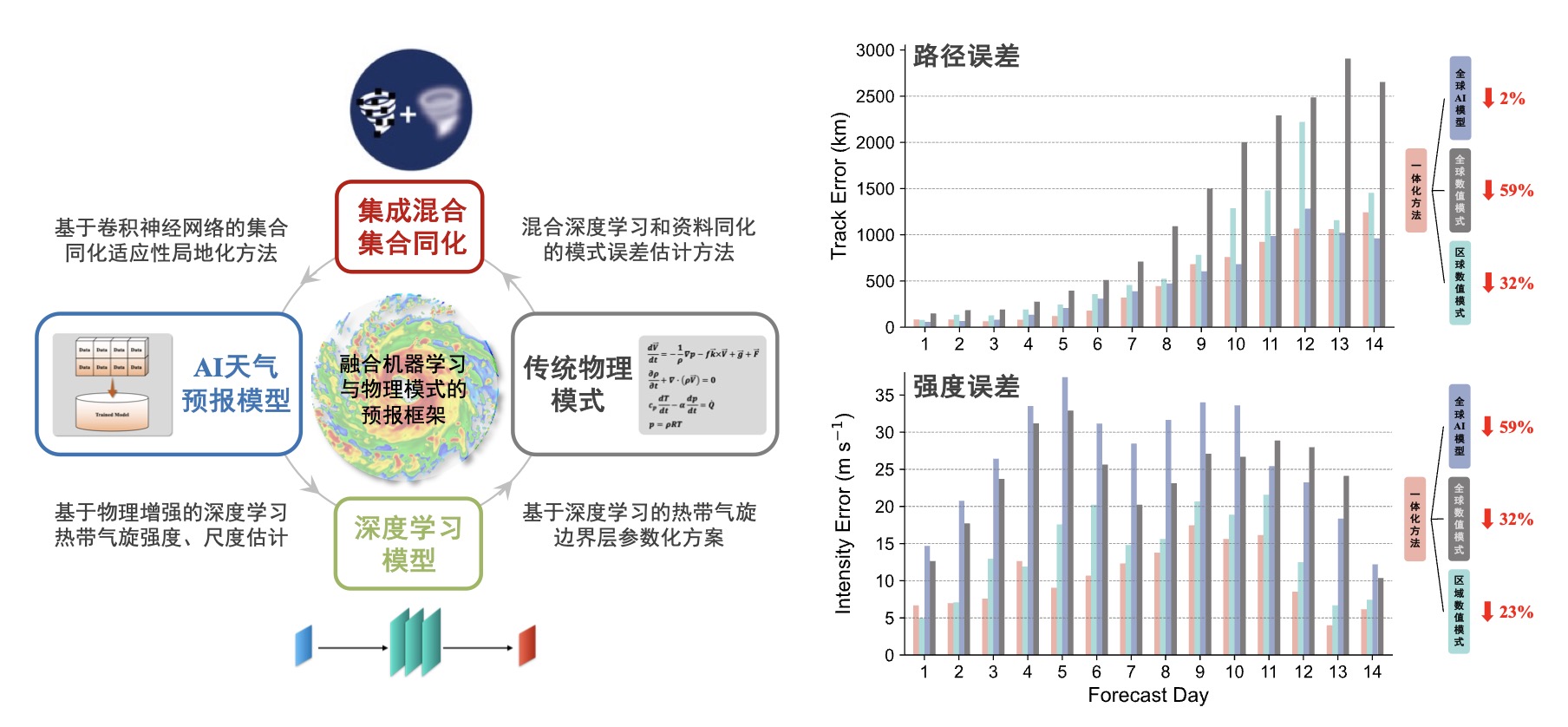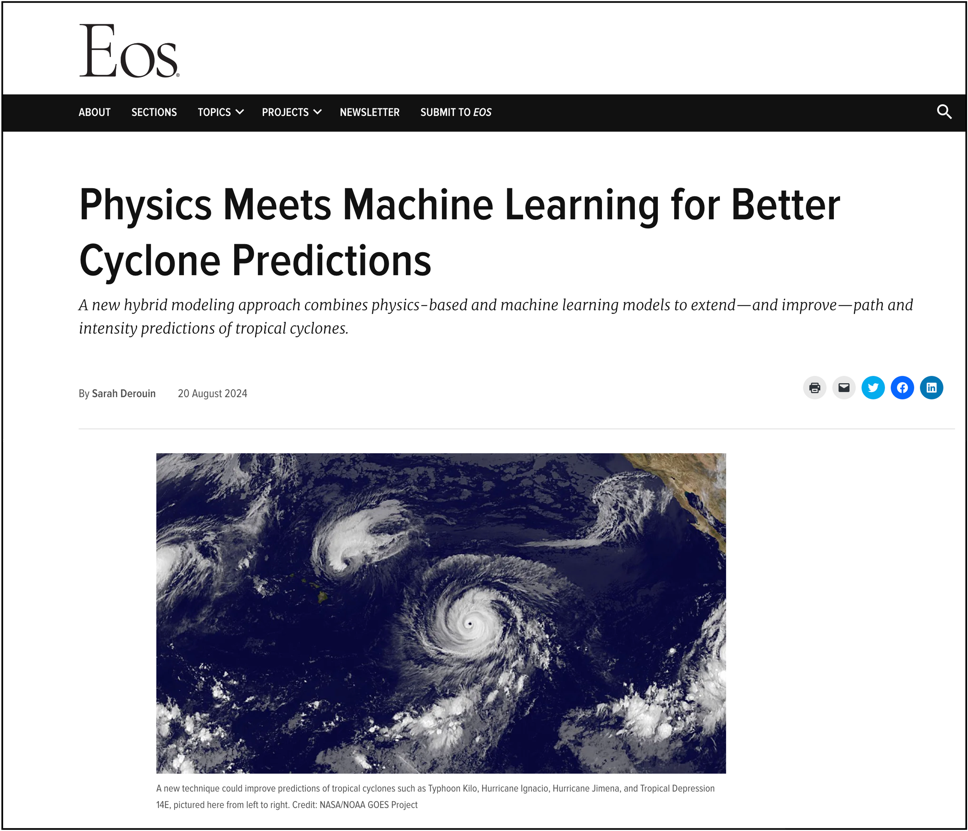A novel study titled "An Integrated Prediction Method of Deep Learning, Physical Constraints, and Numerical Simulation, for Typhoon Intensity" — jointly developed by Nanjing University and Nanjing University of Information Science and Technology — has been selected as one of China's Top Ten Advances in Meteorological Science and Technology of 2024. The research team includes Lili Lei, Haoyan Liu, Yi Zhang, and Zhe-Min Tan.
Accurate typhoon intensity prediction is critical for national security, disaster prevention, and public safety. But typhoon intensity prediction, especially for long lead times, has been a challenge in numerical weather prediction (NWP). This new study developed a novel framework that integrates deep learning, numerical simulation, and dynamic-physical constraints, for typhoon intensity forecasts. By systematically optimizing key components of NWP, including initial conditions, model physics, model error corrections, and prediction frameworks, the novel method provides a new pathway for high-resolution, extended-range typhoon intensity forecasts. The hybrid assimilation model combining deep learning and data assimilation improves initial typhoon conditions and quantifies forecast uncertainties. Additionally, the extended-range forecasting framework with integration of deep learning and numerical models significantly reduces two-week typhoon intensity forecasting errors.
This pioneering framework marks the first successful demonstration of technically feasible typhoon intensity warnings at a two-week lead time, enhancing forecast accuracy, reliability, and operational stability. These advancements provide crucial lead time for deploying disaster mitigation measures and strengthening emergency response capabilities. The research has garnered international acclaim, featured as a Research Spotlight in EOS, the flagship journal of the American Geophysical Union (AGU).
The "China's Top Ten Advances in Meteorological Science and Technology" initiative, organized by the National Meteorological Science-Education Integration Innovation Alliance, highlights cutting-edge achievements in numerical forecasting, AI and big data, meteorological satellites, and climate change. The 2024 awards underscore China's leadership in advancing meteorological science and technology.

Figure 1. Integrated forecasting framework combining machine learning and physical models (left), showcasing superior 1-day to 2-week typhoon track/intensity predictions compared to AI models and regional/global numerical models (right).

Figure 2. The study was selected as the Editor's Choice in JGR-Machine Learning and Computation and featured in AGU's EOS (Link: https://eos.org/research-spotlights/physics-meets-machine-learning-for-better-cyclone-predictions).
